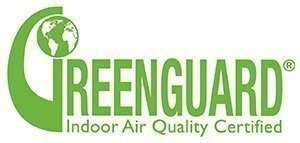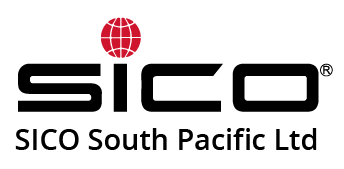SUSTAINABILITY
Yes! Investing in sustainable furniture can make a substantial impact on the environment around us.
As a global manufacturing company our united mission has always included the pursuit of environmentally friendly, sustainable solutions. Because our product components are of significantly higher quality, the useful life cycles of our products are significantly longer than those of our competitors. That can mean less material usage, salvage, waste, landfill consumption, disposal costs, freight costs, downtime and repair costs.
As a company, we work hard to bridge the gap between supplying sustainable, earth-friendly product solutions and constructing products that are built to stand the test of time. We are committed to providing customers around the world with quality products that have a proven track record as a sound investment. In addition, we are always researching new sustainable materials for use in our products.
Our GREENGUARD® Gold Certification:
As part of our commitment to support this effort, we have a growing number of products that have now been certified with the GREENGUARD® mark of distinction.
All of these products have gone through a stringent independent testing program that has affirmed that they meet the high standards set by the UL Environment for low chemical emissions that contribute to healthier indoor environments. Look for this logo on SICO® tables and other products.


ENVIRONMENTALLY FRIENDLY MATERIALS AND PRACTICES
Medium Density Fibreboard (MDF)
Medium Density Fibreboard (MDF) top core material is manufactured from materials under SFI (Sustainable Forestry Initiative) or Canadian Standards Association Standards. The MDF/poly top blanks supplied to us feature a substantial amount of recycled/recovered material in their construction. Over 99% of the materials used to produce the top blanks are recycled/recovered. The Composite Panel Association certifies its North American particle board and MDF panels as Environmentally Preferable Products (EPP). They are certified to have met the following criteria: Contains 100% Recycled/Recovered Wood Content. They also conform to ANSI A208.1 (PB) or A208.2 (MDF) Formaldehyde Emission Requirements.
Corrugated Packaging
Corrugated packaging and inner-packaging is constructed of recycled paper products. The percentage of recycled fibre content used in the paper-making process contains 70% total recycled fibre content and the remaining 30% being post-consumer (or comparable) fibre. Post consumer is defined as fibre derived from recovered paper, which has been printed and/or contains inks or coloured dyes. For every tree that is cut, 10 are planted
Recyclable and re-usable containers and pallets
Recyclable Materials
Materials used may include recycled paper, recycled plastic, recycled content aluminum, recycled steel, and recycled wood, other recycled metals, and recycled powder paint.
Wood Waste & Sawdust Recycling
Wood waste sawdust generated in manufacturing is recycled and used for animal bedding.
Permanent, Reusable, Collapsible Containers
A major program of inter-company material shipments has been converted from single-use paper/wood packaging to permanent, reusable, collapsible containers to reduce scrap, waste, transportation, fuel consumption, etc.
Adhesives are formaldehyde-free
Powder Coating Method
Powder coating is an environmentally friendly method of applying a finish that virtually eliminates overspray and provides a non-toxic surface that emits no formaldehyde or VOCs.
Indoor Air Quality
GREENGUARD® GOLD certified products contribute to good indoor air quality.
ENVIRONMENTALLY FRIENDLY MANUFACTURING
- Metal scrap generated in manufacturing operations is recycled.
- Material handling equipment has been converted from liquid propane gas internal combustion engines to zero emission electric units.
- Plant machinery requiring liquid coolant utilises water-based materials with closed loop systems.
- Solvents are re-filtered and re-used.
- We are converting plant lighting to high efficiency, energy conserving lamps.
- Virtually 100% of our painted components are finished with powder coatings utilising closed system recycling systems, with recaptured powders reused rather than becoming waste. Pre-cleaning liquids are recycled to the maximum extent possible, and treated prior to disposal.
- All plating is done in state of the art systems. Rinse waters are reused extensively, with water discharge reduced by 90%.
- Zinc and clear plated parts are 100% finished using a trivalent conversion coating, giving superior corrosion protection.
- Our chrome plated finish is RoHs compliant—even though this particular directive does not apply to our type of manufactured goods, yet.
- Our chrome plater has given several presentations at international conventions and has received several waste reduction awards.
- All metals are recycled and reclaimed from plating filter and returned to economic use in manufacturing. Iron, Nickel, and chromium are removed to make stainless steel. Copper is refined to make copper and brass products. Zinc is removed to make zinc die-castings.
- Recaptured powder from powder paint is recaptured at 95% resulting in very little waste.
- Incoming packaging from production materials is recycled or re-used to the greatest extent possible.
In addition:
We are undergoing a significant conversion from printed materials and record retention to an electronic retention system. This allows access to information and files without printed material, file cartons, transportation, and with minimisation of paper and metal file storage requirements.
- We are working towards printing all documents on recycled-content paper
- Our internal office support staff are committed to recycling waste papers, aluminum, plastic and steel.
- Significant percentages of previously printed literature have been eliminated and replaced with a comprehensive web site that allows customers access to all product instructions, literature, parts lists, etc. without the need for printed, packaged material.
